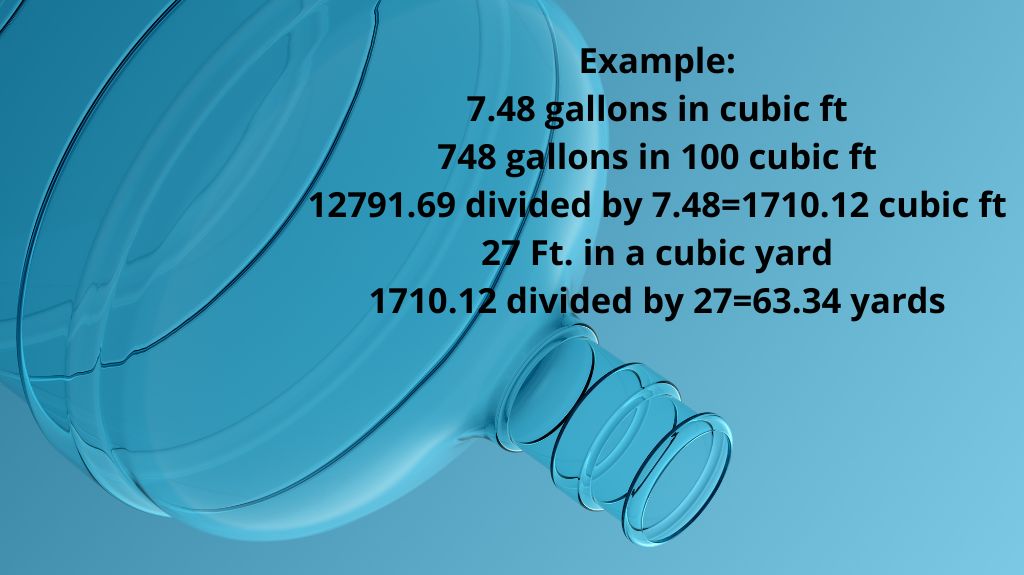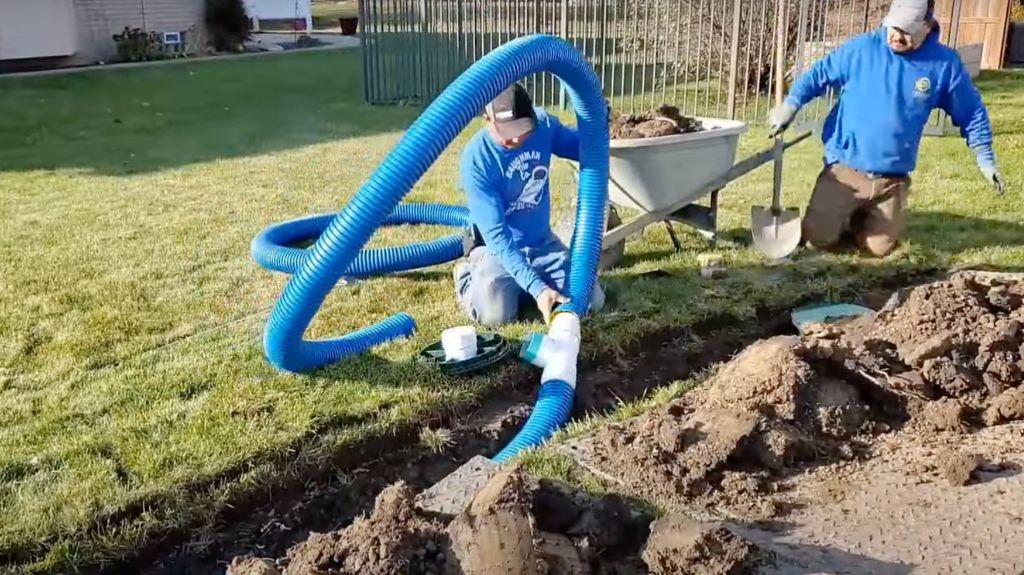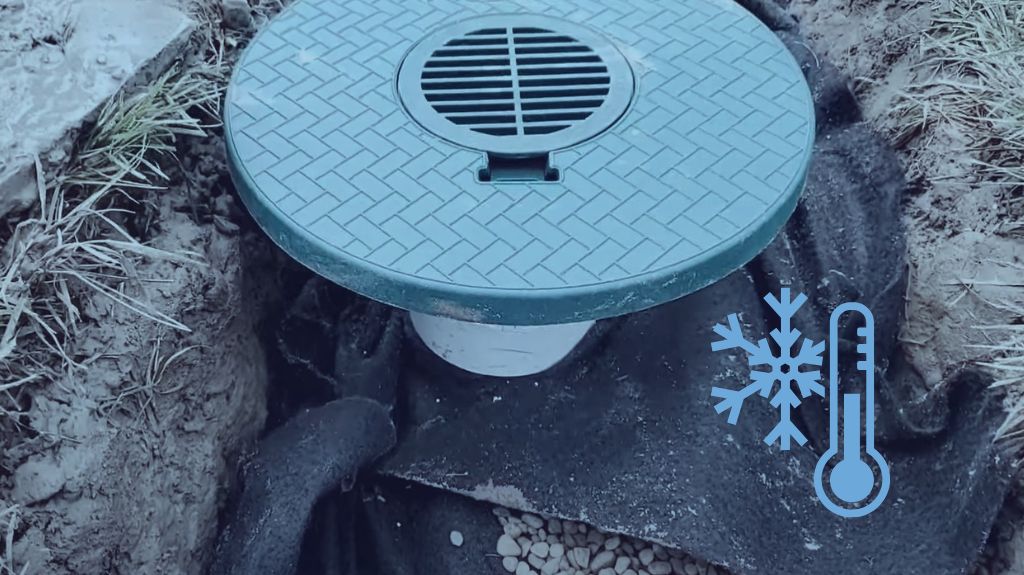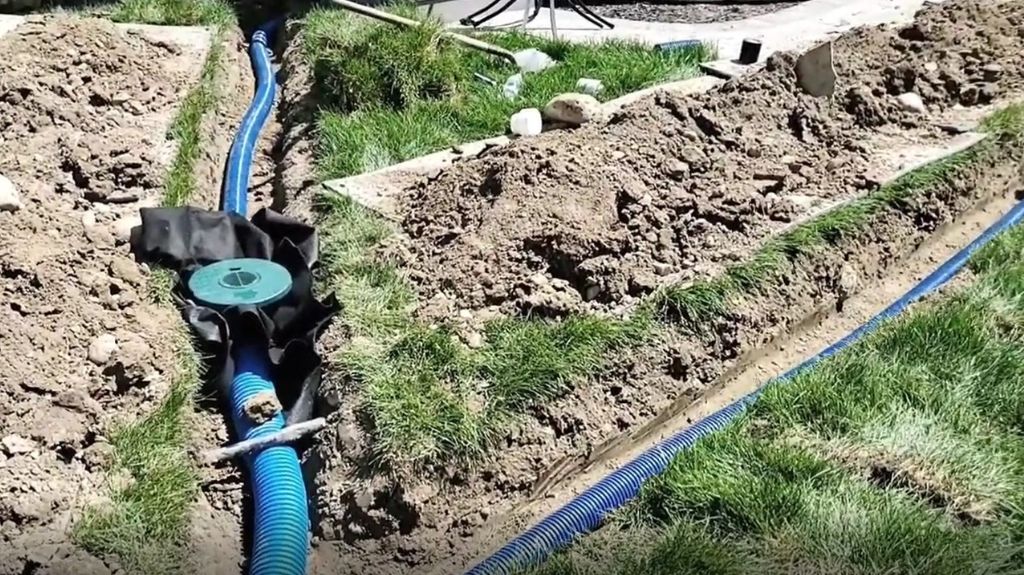How Do You Size Your Buried Downspout System?
Whether you’re a homeowner getting a buried downspout professionally installed or a DIYer installing your own, you should know some critical factors before your shovel hits the soil. French Drain Man has provided drainage tips on everything from the fabric, the slope, and the pipe to use. But how do you size your buried downspout system?
1. Use PF Tabular to Calculate Roof Runoff Water
I’m going to show you how to determine the size your buried downspout should be. I think you’ll find it pretty simple and easy to use my format. First, for your own home, you need to look up what your 100-year rainfall is for the duration of 24 hours. Below you’ll see the table that I’m using for my area.

My 100-year rainfall for a duration of 24 hours totals 5.13 inches. You’ll see it highlighted in the table. So, you can use this table if you’re in Michigan and the Detroit area or surrounding area. If you’re outside of Michigan, look up your local PF Tabular. This information is available to everybody. You’re going to need it.
And there’s probably going to be a few people that say, oh, 100 years, how often is that going to happen?
Well, I’m here to tell you that I’ve seen it twice in my adult lifetime. I expect to see it at least once more while I’m still working and doing yard drainage. It’s supposed to be a 1% chance each year that we could see the 100-year rainfall. But I’ve already seen it twice in 33 years. So, I’m just letting you know, size your systems for this.
2. Determine Area of Roof
I’m going to show you the format that I use to determine the area of your roof. The United States measures rain in inches, so the chart below is in those units. If you’re in Canada, you’re dealing with the metric system, convert the format to your units because you need consistency.
Say I have a rooftop, and it’s 40 feet by 100 feet. I now need to convert that 100 feet to inches. Well, there are 12 inches in a foot, so we’re going to multiply 100 by 12 to get 1,200. We’re going to do the same thing with the 40 feet. We’re going to multiply it by 12 inches to reach 480.
Start by taking the area of roof
Example: 40 ft. wide x 100 ft long
100 ft. X 12 in. = 1200 in.
40 ft. X 12 in = 480 in.
Next, include 100 Year 24 hours rain amount
1200 in. X 480 in X 5.13 in of rain = 2,954,880 Total cubic inches of water
3. Use 100-Year Rainfall Stats to Size Your Buried Downspout System
Now we’re going to put the 100-year rainfall stats to use here. So, we have our 1,200 times 480 times our 100-year in a 24-hour rainfall, 5.13. That equals 2,954,880 total cubic inches of water. You want to divide by 231 to get the number of gallons because one gallon equals 231 cubic inches.
We have 2,954,880 cubic inches divided by 231 cubic inches. It equals 12,791.69 gallons. Next, we divide that number by the number of downspouts. In this case, let’s say that this home had seven downspouts. That would be 1,827 gallons of water per downspout. That’s not exact because gutter runs are slightly different, but it gives you an idea.
Let’s have some fun with this to wrap your mind around the 12,791 gallons. Let’s look at some examples.

7.48 gallons are in a cubic foot. 748 gallons are in 100 cubic feet. Remember, these guys want to build you a dry well to hold all this water. So, if we take 12,791.69 divided by the 7.48, it equals 1,710 cubic feet. Think about that. That’s how big the dry well would have to be. These contractors want to tell you that one size fits all. I’m telling you that one size does not fit all for leach fields, French drains, and yard drains.
Let’s have a little more fun here. 27 cubic feet are in a cubic yard. Take 1,710 and divide it by the 27 cubic feet in a yard. You end up with a little more than 63 yards. Imagine the dry well you’d have to dig out 63 yards to handle this roof runoff.
Now you know how to calculate your roof runoff water, so you can see what kind of water you’re dealing with. If you’re ready to start digging your trench, check out our full tutorial on how to extend your underground downspouts.
Why It’s Important to Size Your Roof Runoff System
After 35 years in the field, we’ve seen it all. Unfortunately, we’ve had to correct issues that other contractors created for homeowners. If you have poor percolating soil and a contractor tells you that a dry well will always work for a large dimension rooftop, it will not work. It never does.
That’s usually when we come in, after other contractors screwed up your yard and finances for the job. If you want your buried downspout to work at maximum efficiency for as long as possible, it’s critical to size your buried downspout correctly.
The Buried Downspouts Experts, French Drain Man
French Drain Man is the expert on buried downspouts and everything yard drainage-related. We’ve been installing the highest quality drainage solutions for over 35 years. No detail is too small when installing a system that will protect your home from damaging water. From sizing your buried downspout correctly to using the best, custom-built parts, French Drain Man ensures your buried system is built to last for decades.








